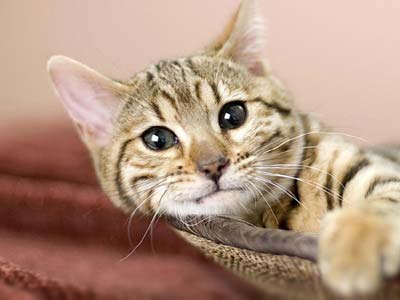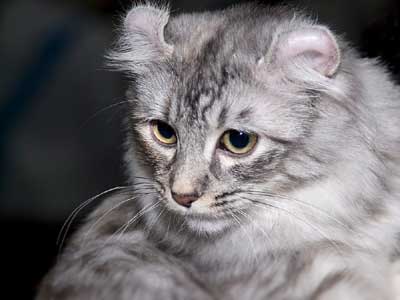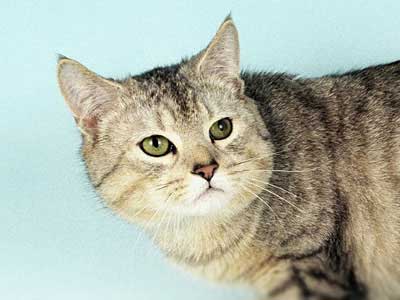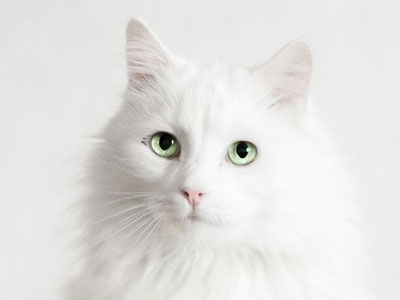Japanese Bobtail
Breed Information |
|
|---|---|
| Popularity |
2018: #25 2017: #24 |
| Name | Japanese Bobtail |
| Other names | Japanese Truncated Cat |
| Origin |  Japan Japan |
| Size | Small |
| Coat |
Long Short Hair Silky Soft Straight |
| Lap Cat | Yes |
| Life span | 14-16 years |
| Temperament |
Active Agile Clever Easy Going Intelligent Lively Loyal Playful Social |
| Weight |
Male: 7 - 10 pounds Female: 6 - 8 pounds |
| Colors |
Blue Brown Ruddy Tan Red |
| Kitten Prices |
Average $800 - $1500 USD The Japanese Bobtail symbolizes good luck in his native land and is one of the oldest breeds. Because Japanese bobtail cats are uncommon, they typically cost between $600–$1,600 (USD) from a responsible breeder. |
Breed Characteristics |
|
|---|---|
| Adaptability |
5 stars |
| Affection Level |
5 stars |
| Child Friendly |
4 stars Good With Others: It is usually good with adults, children (6+), and seniors and can be very affectionate towards them. |
| Dog Friendly |
5 stars |
| Energy Level |
5 stars |
| Grooming |
3 stars Moderate Maintenance: Regular grooming is advised to keep its coat in good shape. It stimulates circulation, massages the skin, and removes debris and loose hair. Frequency should be once a week. |
| Health Issues |
1 stars Hypoallergenic: NoGenerally Healthy: It doesn't have as many known illnesses and conditions as other cats. Best for owners who do not want to worry about long-term medical costs. |
| Intelligence |
5 stars |
| Shedding |
3 stars Moderate Shedding: Expect this cat to shed moderately. By providing it proper nutrition, regular grooming, and keeping the shedding contained to a small area, like a pet bed, will minimize shedding and make it more manageable. |
| Social Needs |
5 stars |
| Stranger Friendly |
5 stars |
| Vocalization |
5 stars Frequent Vocalization: It is known to be vocal. Owners might be concerned for excessive and undesirable crying or meowing, especially at night. |
Kitten Names |
||
|---|---|---|
| Rank | Male | Female |
| 01 | Mikesch | Pepsi |
| 02 | Oliver | Molly |
| 03 | Buddy | Maisy |
| 04 | Coco | Ayla |
| 05 | Achmed | Daisy |
| 06 | Gavin | Maya |
| 07 | Momo | Sophie |
| 08 | Nugget | Emma |
| 09 | Simba | Tippy |
| 10 | Chunk | Sassy |
| 100 Cute Kitten Names › | ||
Overview |
|---|
|
The Japanese Bobtail is an ancient breed that has existed for centuries in Japan. Cats with short, stubby and/or kinked tails are fairly common on the Asian continent and may share a conformational genetic mutation with the Japanese Bobtail. The most recognizable characteristic of this breed of course is its short, fluffy tail, which typically is carried closely curled upon its rear end, especially when it is resting. The tail is usually about 3 or 4 inches in length and has longer hair than that on the rest of the body, giving it a “pom-pom” appearance that masks the actual deformity of its bone structure. The Japanese Bobtail’s tail is usually flexible only at its base, because the few vertebral bones of the tail are fused. When the Bobtail walks, its tail may be held more upright and erect, rather than tight and curled. The Japanese Bobtail is a highly personable cat that loves to be in the company of people. It can be more vocal than many felines, but its voice is softer and more melodious than that of the Siamese and most other exotic oriental shorthairs. The Bobtail makes a bright, affectionate, well-behaved companion both for people and for other pets. Like many other purebred cats, it does not thrive being kept isolated or alone for long periods of time, nor does it do well living in the out-of-doors. The Japanese Bobtail needs to be an intimate, well-integrated part of the family and certainly is deserving of that level of attention and commitment from its owners. The Bobtail is highly adaptable and enjoys a bustling, stimulating living atmosphere. This is the perfect cat breed for homes with lots of children. |
Children & Other Pets |
|
The Bobtail is a great match for families with kids because he shares their high energy level. He is up for anything, from playing fetch to being a guest at a tea party to being dressed up in doll clothes and paraded around in a baby buggy. Always supervise children to make sure they pet and play with the cat nicely and don’t pull his ears or twist his tail. He is happy to live with cat-friendly dogs, too, thanks to his amiable and fearless disposition. Introduce pets slowly and in controlled circumstances to ensure that they learn to get along together. |





